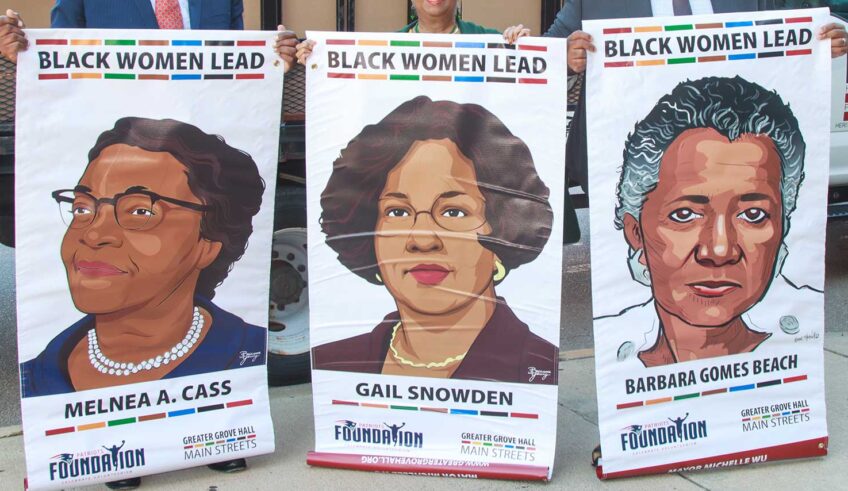Activists and political leaders across the city of Boston are increasingly and justifiably concerned that gentrification in the form of rapidly rising home sales prices and rents in low-income areas are contributing to displacement of families and children. This was one concern reflected in the recent report, Facing Massachusetts Housing Crisis 2016, published by the Massachusetts Special Senate Committee on Housing. The offers creative ideas for increasing the supply of affordable housing and reducing or preventing housing displacement, including cooperative housing and community land trusts, increasing opportunities for home ownership, property tax relief in return for municipal liens.
While the report is timely we should not forget that gentrification can also trigger a small business crisis in some neighborhoods. The discourse and solutions regarding gentrification and displacement should be expanded to also encompass the potential impacts that it can have on small and neighborhood businesses and microenterprises. Often times the markets these businesses serve are precisely the households facing potential displacement as a result of rapidly increasing housing and land costs. In fact, what has been described as ‘commercial gentrification’ represents a sort of ‘anti-local economic development’ because it threatens a vital part of Boston’s economy in low-income and working-class areas.
Boston’s small businesses and micro-enterprises reflect key economic activities across the city, and perhaps more so in low-income neighborhoods. But just to use the example of Roxbury for now: in 2014 there were approximately 1,738 businesses in this neighborhood. Half of all these businesses are in services sector, and another fifth (19 percent) in retail trade. The former accounted for 9,728 employees and the latter, 3,293 employees. And, important to note, 62 percent of the 1,738 businesses employed between 1 and 4 workers. Based on Bureau of Labor Statistics data for 2015 Roxbury reported about $1.1 billion in consumer expenditures of which $497 million was in retail. Housing displacement and lack of affordable housing threatens this kind of economic base.
The displacement of individuals and families impacts the kind of disposable income that is a foundation for this sector’s bottom line. As the above figures suggest, this can be a major problem because this sector employs local residents and youth, and thereby contributes to family stability and health. They are also important in helping to maintain a social and economic foundation that can be the basis for yet greater economic security for all residents. And remember, these smaller businesses and micro-enterprises cannot just get up and leave, to pursue a cheaper workforce in another part of the world. And they don’t want to because they understand that their economic well-being is directly linked to stable and vibrant neighborhoods.
So, what are some potential strategies that might help to strengthen and expand this sector? Mayor Walsh’s recent announcement re-establishing participation goals for businesses owned by people of color and women is an important start. This can represent an economic lifeline for neighborhood-based businesses. The Federal Department of Housing and Urban Development’s earlier Demonstration Disposition Program provides yet another idea. Here, the rehabilitation of 2,000 Boston housing units was programmatically linked to specific economic goals with the purpose of strengthening the capacity and increasing opportunities of black and Latino-owned businesses. In other words, improving the quality of housing for hundreds of families was carried out, symbiotically, with increasing economic opportunities for neighborhood businesses and those owned by people of color.
Some of the proposals called for in the report can be implemented in ways which serve to strengthen small businesses and micro-enterprises at the same time that we respond to the housing crisis. For example, community land trusts can protect housing for low- and moderate- income families and small businesses at the same time. As is the case with the former, the latter are buffered from speculative real estate activity and resulting rising rents. There are other ideas and strategies that can be considered.
The report above affirms indirectly that there is no conflict between a focus aimed at the housing crisis and displacement, and one aimed at commercial gentrification. As pointed out by Professor Penn Loh at Tufts University, responding to the housing crisis and protecting small businesses and micro-enterprises is “synergistic…more successful locally-owned businesses mean those owners and workers have more income to secure and stabilize their housing position.” Unless we respond to the housing crisis and displacement as intricately connected to commercial gentrification, even well-intentioned strategies may be limited in terms of impacts.
James Jennings is Professor Emeritus at Tufts University. This column is part of a forthcoming essay in the Trotter Review.

![Banner [Virtual] Art Gallery](https://baystatebanner.com/wp-content/uploads/2024/04/NJ-H_1-150x150.jpg)




